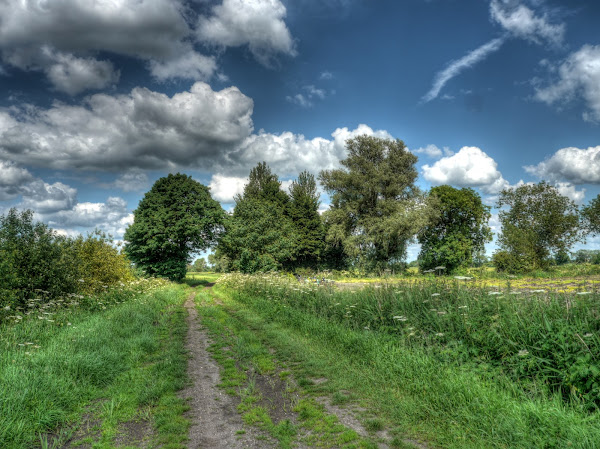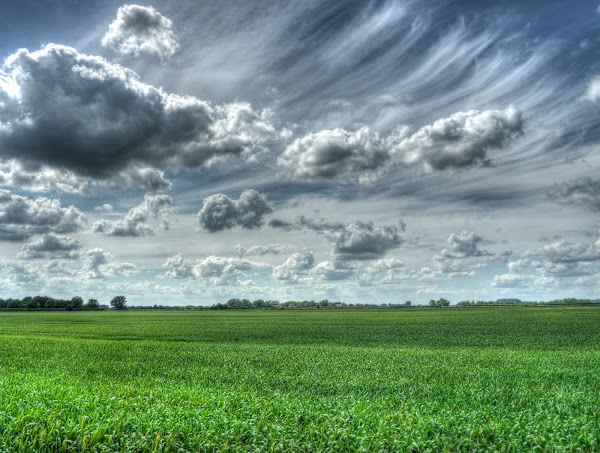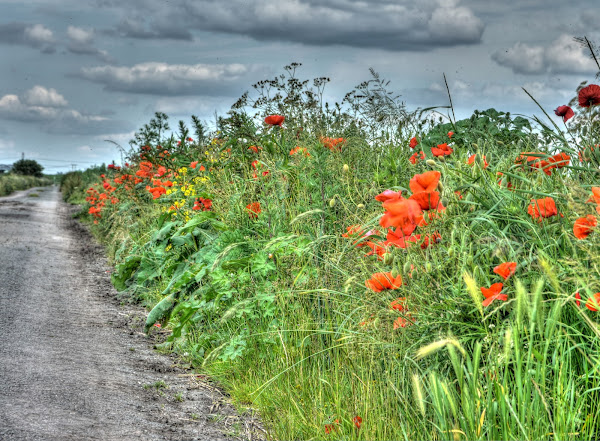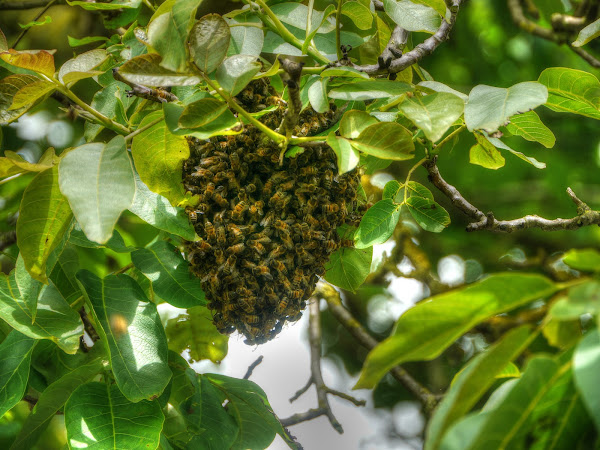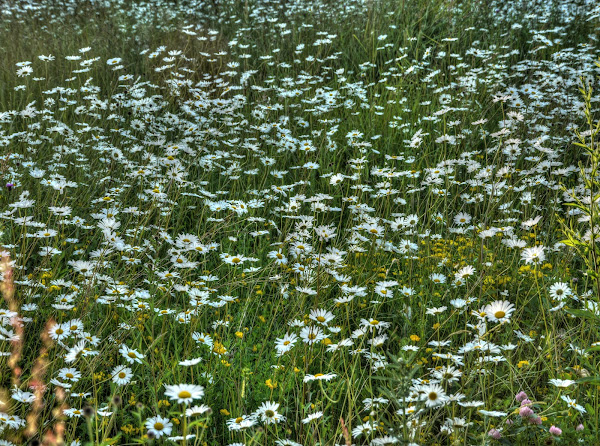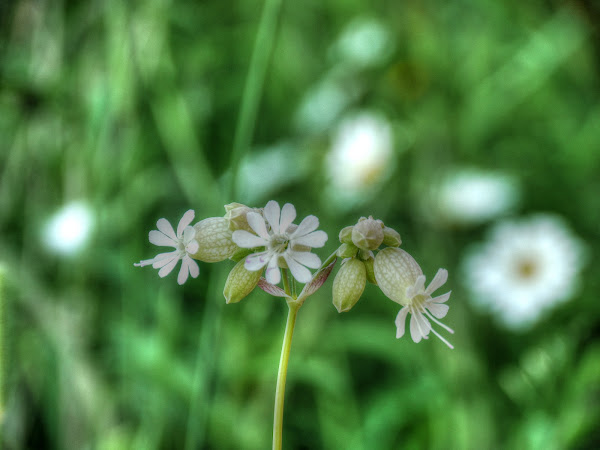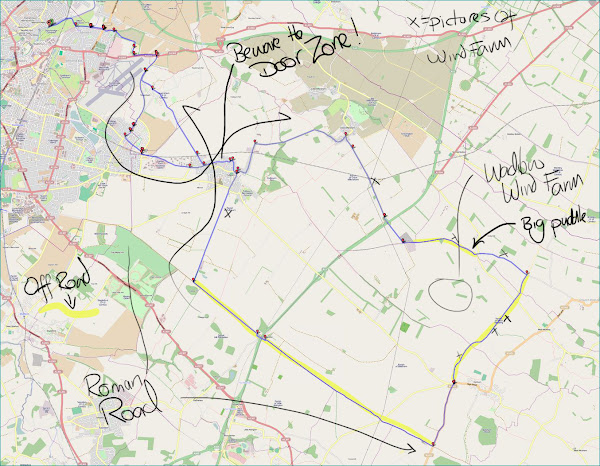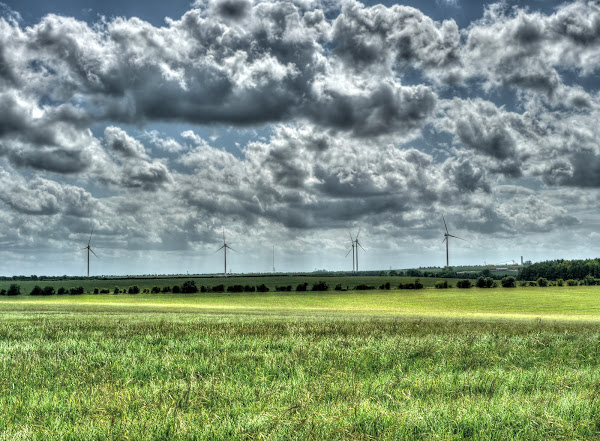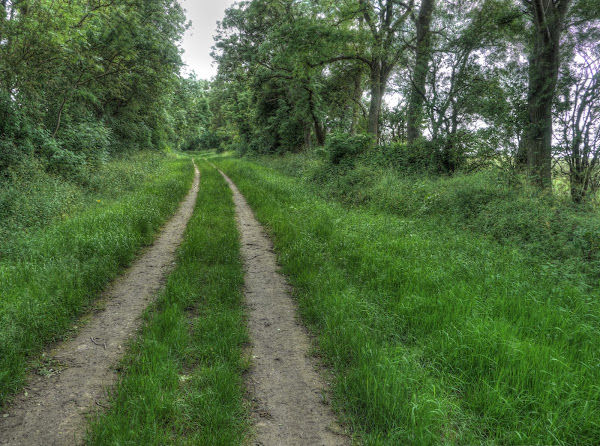Sunday, 17th June 2012: It is a weird Summer we seem to be having – we are certainly getting more rain in the Flatlands than I can remember during previous Summers. Which is perhaps a good thing for crops growing in the field and the reservoirs and ground water sources that supply us with water. I wonder how the Water Companies do their capacity planning. All the extra houses being built around Cambridge will need water – it also seems to me that the more modern the houses the more extravagant the plumbing.
There is a consultation taking place at the moment with various options up for discussion, including up to 25,000 new homes, including 12,300 in the green belt. The article suggests that the choice is stark “because many more homes are needed to rein in soaring rents”. Well as far as I can see London is a big place with lots of houses and their house prices and rents seem to continue soaring even more than ours in Cambridge. So just building houses seems a simplistic solution.
With news houses comes more cars – ‘which could create a nightmare for city drivers’ – which if you follow the article includes those commuting in from places like St Neots.
It also interesting that despite the “need” for more houses Northstowe got put on the back burner during 2008/2009 because of the economy.
It seems to me that Society is evolving. I have just read a book about one Fen village (disguised as Gislea): Fenwomen: A Portrait of Women in an English Village. It is a village I cycle through and the book is a collection of interviews of several generations of women. It is both amazing and not amazing at how live has changed from cars, phones, roads, supermarkets to computers and the Internet.
It seems that we are sold on the idea that for the UK to become more prosperous it will be good for all and to drive that prosperity we need to expand. Indeed the subject “’Growth, not greed’ wins the day" was considered in a debate by the Union Society. The trouble is with the Growth Agenda, that I see, is that it seems to be sailing close to the wind of pyramid selling…
Why does the agenda focus on growth. Isn’t that what got us into our current economic situation – the UK has huge debts. I am not just talking about the “UK public sector net Debt of £1022.5 billion as of March 2012 – 66% of GDP” or the Unadjusted measure which takes into account financial sector intervention (bailing out the banks) and adds up to £2311.6 billion – 147.3 of GDP. No rather the total UK indebtedness – which includes household debts, company debts, government debts and bank debts – a figure almost 5x GDP.
When I was a boy people would talk about buying things ”on credit” as buying on the never-never. Then the UK went through a boom of home ownership and share ownership and increase in the prices of houses to the point where to go to University requires substantial personal borrowing. (average loan £53K – Aug 2011). The UK House price to earnings ration is also over 5 whereas it was around 4 when I first bought a house and dropped.
The issue of course with debt – whether personal, corporate or public – is whether you can pay it off – over the lifetime of the debt, The trouble is circumstances change and these three types of debt are interlinked.
So as a society we seem to have convinced ourselves that the agenda is growth. Yet I wonder that whilst we consider the benefits of growth we fail to consider the real costs of that growth. Even here in the flatlands where the employment rate is high – “Cambridge ‘is UK’s top-performing city economy’” I believe the the house-builders are being conservative (cf. Northstowe delay).
Now I do believe that it makes sense to build upon success and indeed Cambridge does seem to be successful in term of economic strength. The trouble is much of the “growth” thinking seems to be based on looking in the rear-view mirror. Various towns and villages in the Fens are going through a Masterplan planning stage – including Ely, Soham and Burwell. The Issues document for Burwell has the following:
What would happen if we so no more growth for Burwell?
No further housing growth in Burwell would mean that over the next 20 years the population of the village would decrease. Lee people would mean a decline in the number of customers/users of the shops and facilities in Burwell. It could also potentially lead to an aging population as young people would be forced to move out of the village and families would be unable to move in, due to a lack of housing.
Now in the high-tech world that sort of “marketing” would be known as FUD – fear, uncertainty and doubt. Now I don’t live there, so far be it for me to comment on what they might want. But it tends to imply that the only way is growth – and that is for at least 20 years - the conclusion being that it is impossible to have villages and towns of a steady-state size.
One of the key questions I’d be thinking about is what is the future going to look like – what will transport be like – what would we like life to be like. Let’s face it 20 years ago we barely had the Internet and Email (WWW – 1989 Amazon – 1995, Ebay 1995). It has been ages since I last bought Music in a shop, or books – the times they are a changing. Perhaps one of the major parts of a Masterplan should be to put in some decent connectivity – real broadband – that is what’ll help towns and villages to be relevant in the future without having to have us all spend our time in congestion in little tin boxes.
Whilst typing this this news item appeared – “New residents’ parking zones planned for Cambridge”. We are all NIMBYS at heart – the failure is one of lack of strategic planning.
Whether we like it or not technology has been coming our way for some time – It can be a force for good, it can be a force for bad and it can just get in the way. It isn’t just technology that gets in the way though it is the way that is is designed. How many tickets does it take for a train passenger and her bike to do a round trip from Lees to Leicester on the train? – 14. That is a design failure in my view.
Technology can also allow many of us to work from home – “The end of the 9-5” discusses how Bosses are more relaxed about time-keeping as they know many of their staff keep in touch 24-7. Where might this take us – working from home.
We can also use technology to make our lives safer – although there is a fine line between upholding the law and snooping. The trouble is we tend to use fairly blunt instruments – speed most of the time and you are OK, get caught and it used to be points and a fine or even a ban. Nowadays there is the option of going on a Speed Awareness course for a first-time minor infraction. Which seems to be a good thing in my view.
The way speed cameras and bus lane cameras probably doesn’t help = “The sneakiest camera in Britain? Bus lane snooping machine hidden behind a tree catches 1,500 drivers in a single week, netting council around £90,000”. the obvious answer is don’t drive in bus lanes. Mind you there are some badly designed bus lanes – the trouble is if the rules are not uniformly applied then it exacerbates the problem. If some use the bus lanes and some don’t then you get “turbulent” traffic flow and the probability of accidents is higher. It also create real problems for the bus drivers.
The step after enforcement is to increase the “intelligence” or rather automation of the tasks performed by the motorist. For instance “Jam-busting car that drives itself: Auto-pilot lets motorist relax in congestion”. It seems to me that roads and cars are not the best way to get lots of people to work. It also seems to me that people make mistakes that impacts on others safety. (Personally I am in favour of Blackbox insurance as well unlike this person.)
Recent Department of Transport Free Flow vehicle speed data indicates between 2010 and 2011 the percentage of cars and motorcycles exceeding the 30mph speed limit increased to 47% and 50% respectively. Further data also shows that Pedal Cycle traffic increased by 2.2% between 2010 and 2011 and is the the fourth consecutive year in which increased. (It only includes estimates for cycling on roads as well!)
However what is serious is that Cycle casualties have increased sharply in 2011 despite the small 2.2% increase in pedal cycle traffic. In fact there were more car occupant fatalities (883, up 6%), more pedestrian deaths 453, up 12%), more motorcycle deaths (362, up 10%).
Sadly I read of an Elderly man on a mobility scooter who was killed after being crushed by a passenger bus. The “right” to mobility is seriously affected by the old-fashioned structure of our transport system. It is interesting though that no-one talks about the punishment of drink-driving offences as being a tax on drivers. In fact it seems that informing on drink-drivers is seen as the right thing to do. (I think it is – but accept that we don’t perhaps want a nation of curtain twitchers.
Mind you as I have said many times what keeps me off the roads is not the danger – because it is still relatively safe, no it is the sheer unpleasantness of motor traffic in terms of noise and pollution.
However I do like to get out and get a bit of fresh air. So it amused me to read that our obsession with sport is so great that we have become a couch potation nation. Somewhat ironic really. Apparently we are only likely to be inspired to take up a sport by the sporting feats of others if we stand have a chance of getting close to them in terms of performance.
So this ride was a regular weekend run for me – cycling around the byways between Fen Ditton and Horningsea and then over the bridleways to Lode and more of less up the Lodes Way and back. Here is the Bike Route Toaster map of my ride – 56Km/35 miles of rather pleasant fen land countryside.
What was I saying about unspoiled, well I wasn’t actually, around these parts which are flat and open objects on the sky line stand out for miles. As I cycled along Low Fen Drove Way around Snouts Corner – you get a “good” view of the pylons. Apparently the “Energy reforms could see some of Britain’s most beautiful countryside ‘covered with hundreds of miles of giant pylons’”. They do make their visible mark, but I suppose that they don’t actually make much impact on the land itself. They do make a bit of a noise in wet weather and windy weather though. There has also been some concern about the side effects of the electric fields and a recommendation from a Cross-part committee that houses and schools should be at least 60m away from High Voltage Overhead Transmission Lines).
What was around the Snouts Corner? A burnt-out car – with two lines of pylons in the distance. I could call this picture “End of the Road” – the car reaches the end of its life and hands over to electricity. It seems that whoever dug the ditch to bar the way had some foresight.
Burnt-out Car at the end of the road – near Snouts Corner, Low Fen Drove Way
Here is the map of my ride, this time around it includes a detour via Burwell and Newnham Drove. I was surprised that the Wadlow Wind Farm was visible from White Fen.
A Ride Around Horningsea and Wicken Fen
The small bit of blue plastic on the door indicates that Police are aware. It always surprises me just how much of a car seems to burn. Apparently the cars are burnt to remove any traceable evidence linking it to the people who stole it.
Burnt-out Car at the end of the road – near Snouts Corner, Low Fen Drove Way
At this time of year the poppies come out. It surprises me just how clear some fields are of any interlopers such as poppies – I suppose that is the power of the selective weed killer. It also heartens me that they are allowed to grow and that there are fields when such powerful chemical warfare has not been waged. There are some rather nice poppies-in-fields pictures here – in a DM article telling us there will be more rain.
Poppies in the field – near Lode
There are also a few thistles as well and what does matter is diversity.
Poppies in the field – near Lode
A bit further along m ride. along Great Drove – grass has been cut for silage at least I assume it will be for silage rather than hay.
Freshly mown field – Great Drove
One a recent ride I took a picture of this field with freshly grown lettuces, when I drove past with my wife on the way to Wicken Fen for our walk it was full of pickers (cutters?) moving like locusts across the field. All that is left is the discarded leaves as the lettuce are beautified for their appearance on a supermarket shelf near you.
What was once a field of lettuce – Great Drove
For a change no pictures as I cycled through Upware across Docking’s Lane into Wicken Fen and into Burwell and back up Newnham Drove to Lodes Way. Although I will mention that St Mary’s Church, Burwell, has started a £1 million appeal with £46,000 already raised from church members. That is an impressive amount and it looks as iff the plan will help the Church evolve the building.
I for one am really pleased that the NT opened up the Lodes Way. Although I like cycling along byways and bridleways I also like to cycle through the solitude of the countryside on decent (for cycling) surfaces.
Lodes Way near Newnham Drove
As I crossed over Reach Lode (on the bridge of course) I was surprised to see a van reversing back along the bank (which is a footpath). Although the bank is maintained to allow diggers access (for bank maintenance and repair) it is unusually to see other vehicles on top. I wonder how and why they got onto the bank. They might have joined via Blackberry Droveway and got lost? Check out the pylons in the picture.
Van Reversing along the Bank of Reach Lode
Having stopped to take that picture – here is a picture of Lodes Way seen from the bridge, looking towards the White Fen direction.
Lodes Way seen from Reach Lode Bridge
Generally these parts are drier than most and the showers can be pretty localised, these clouds looked as if there might be a bit of rain in them along Split Drove. The spuds seem to be doing well.
Potatoes growing alongside Spilt Drove
As I was cycling though White Fen – a bit of mowing was taking place.as mentioned by John the Wicken Fen Warden, perhaps he was driving the tractor?
As you can see this was only a little way down the road from Split Drove and there was a fair bit of blue sky showing.
Mowing the grass on White Fen
You can also see the Wadlow Wind Farm from White Fen - presumably they can see our pylons. The distance, as the crow flies is 12Km/ 7.5 miles. (It was a full zoom with my 14-140mm lens which equals 280mm in 35mm speak.) I must have missed the protests about the Wind Farm – but it seems the this is one of “the biggest inland Wind Farm developments in the country”.
Wadlow Wind Farm seen from White Fen
As I reached the crossroads at Lode I sat down for a drink and a rest before the final leg home. I was surprised to see a group of cyclists out heading up the road from Quy turning down to Bottisham. It is not my favourite stretch of road to cycle along – although it is short.
Quite rightly they are taking the road and all are indicating as they approach the turn – this is important when there are pinch-point islands in the road.
Cyclists turning from the Quy Road into the Lode Road
As all cyclists know, but perhaps fewer motorists appreciate as you come to perform the manoeuvre you have to put both hands back on the handlebars. This is so you can use the brakes and of course for stability as you turn.
Cyclists turning from the Quy Road into the Lode Road
That first bike was a tandem – at first i though it was camera shake that caused the bike to be blurred. It wasn’t, the bike was actually moving quite quickly – tandems can be quite efficient you know.
Cyclists on a Tandem turning from the Quy Road into the Lode Road
And to finish – some Lost Britain aerial photographs – you can link through to the archives and see over Cambridge. And how about this for a camera – a gigapixel camera. (It has 1,000,000,000 pixels – the camera I used in these pictures has 12,000,000. (o save you the maths there are over 80 times more pixels.)



